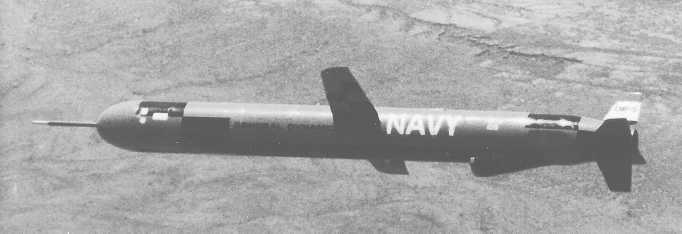| |
missile. Its primary mission is to destroy hostile
surface targets such as combatants, surfaced
submarines, or other vessels. The Harpoon can be
launched from surface ships, submarines, or
aircraft (without the rocket booster).
It was introduced in the fleet on ships and sub-
marines in 1977 and on the P-3 series aircraft in
1979. The Harpoon is being improved to add range
and to decrease altitude in its sea-skimming mode.
The Harpoon was used effectively in attacks on
Libyan targets in the Gulf of Sidra in 1986. The
Navy is now developing a new infrared Harpoon
variant called the Standoff Land Attack missile
(SLAM).
Characteristics of the Harpoon:
Length:
15 feet (surface/submarine-
launched); 12 feet, 7 inches (air-
launched)
Diameter:
14 inches
Wing span:
3 feet (with booster fins and wings)
TOMAHAWK
The Tomahawk (fig. 20-4) is an all-weather
submarine/surface-combatant-launched,
long-
range, subsonic, antiship or land-attack cruise
missile. It can be conventionally armed for
antisurface warfare and conventionally and
nuclear armed for land-attack versions. After
launch, a solid-propellant rocket booster propels
the missile until a small turbofan engine takes
over for the cruise portion of the flight.
The land-attack version of the Tomahawk has
an
inertial
and
terrain
contour-matching
(TERCOM) guidance system. The TERCOM
system compares a stored map reference with the
actual terrain to determine the missile’s position.
If necessary, it then makes a course correction to
guide the missile to the target.
The antiship version has a modified Harpoon
cruise missile guidance system. This system
permits the launching and flying of the Tomahawk
in the general direction of an enemy ship at low
altitudes. At a programmed distance, the missile
begins an active radar search to seek, acquire, and
hit the target ship.
Tomahawk is a highly survivable weapon
against predicted hostile defense systems. Radar
detection of the Tomahawk is difficult because the
missile has a very small cross section and can fly
at extremely low altitudes. Similarly, infrared
detection is difficult because the turbofan engine
emits a low level of heat.
Characteristics of the Tomahawk:
Length:
20 feet, 6 inches (with booster)
Diameter:
20.4 inches
Wing span:
8 feet, 9 inches
Weight:
3,200 pounds (with booster)
Speed:
About 550 miles per hour
Range:
Land-attack, nuclear warhead
—1,350 nautical miles Land-
attack, conventional war-
head— 600 nautical miles
Antiship configuration-250
nautical miles
134.54
Figure 20-4.-The first fully guided Tomahawk cruise missile in flight after being launched from
an A-6 Intruder aircraft.
20-6
|

